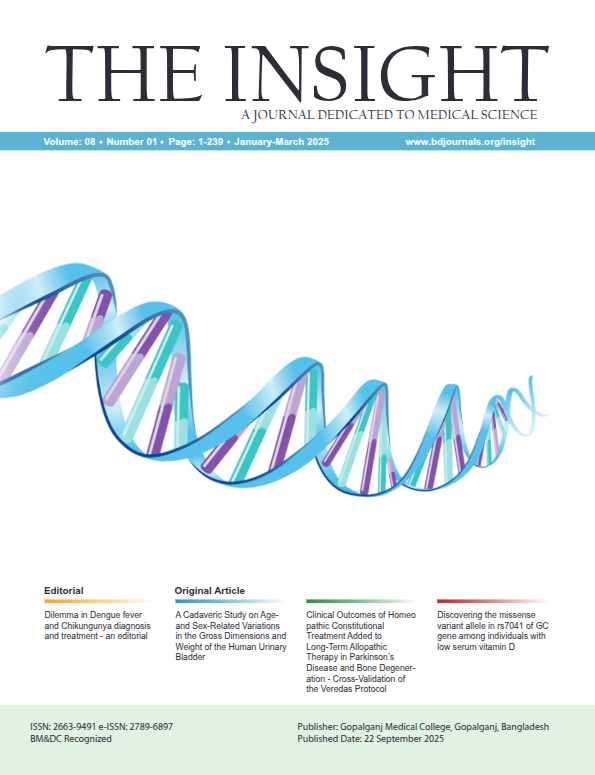Abstract
Introduction: Hyperglycemia is a common stroke complication with prognostic significance, but its impact in nondiabetic patients is not well defined. This study aimed to assess the incidence of hyperglycemia in nondiabetic acute stroke patients and its correlation with clinical features and consciousness levels. Methods & Materials: A cross-sectional study of 100 nondiabetic acute stroke patients (74 ischemic, 26 hemorrhagic) was conducted at a tertiary hospital. Data on demographics, clinical features, BMI, admission glucose, and GCS were collected. Hyperglycemia (≥7.8 mmol/L) was analyzed by stroke type and clinical parameters, with stroke classification based on CT findings. Results: The population's age was 58.37 ± 6.23 years with male predominance (64%, M:F 1.7:1). Most of the patients were urban residents (74%) and obese (51% with BMI >30 kg/m²). The most frequent risk factor was hypertension (63%), followed by family history of cardiovascular disease (47%) and smoking (37%). Hyperglycemia was found in 27% of the total stroke patients, and in much greater proportions among ischemic stroke (34.6%) compared to hemorrhagic stroke patients (24.3%). Among altered consciousness patients, 25% were unconscious, 32% semiconscious, and 43% alert. Blood glucose distribution was 27% with <6.1 mmol/L, 46% with 6.1-7.7 mmol/L, and 27% with ≥7.8 mmol/L. Patients with hemorrhagic stroke presented more severe clinical features like headache, vomiting, stiff neck, and alteration of consciousness. Conclusion: Hyperglycemia affects about one-third of nondiabetic acute stroke patients, more often in ischemic cases. Its link to stroke severity highlights the need for routine glucose monitoring and control.

This work is licensed under a Creative Commons Attribution 4.0 International License.
Copyright (c) 2025 The Insight





 PDF
PDF